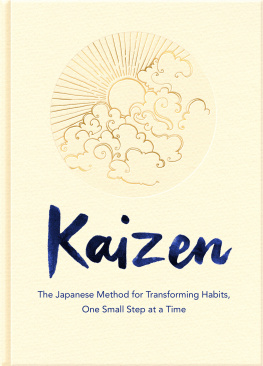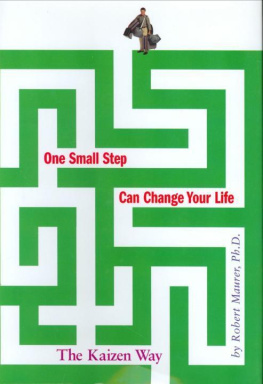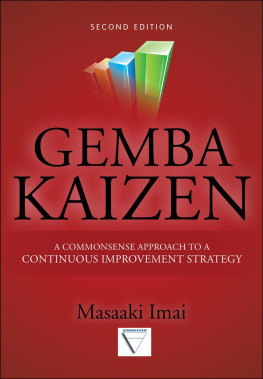About the Authors
Jon Miller has 20 years of experience in the field of kaizen. He is the CEO of the Kaizen Institute Consulting Group. Born in Japan and living there for 18 years, he is fluent in its language and culture, allowing him to work closely with Japanese kaizen gurus. He was co-founder and CEO of Gemba Research, at which he spent 15 years as a senior consultant and trainer, growing the firm to over 40 people before merging it with the Kaizen Institute in 2011. Jon has traveled to more than 30 countries and has wide experience designing global Lean deployment programs for many organizations. He is the author of numerous articles, and translated and edited Taiichi Ohnos Workplace Management as well as contributing to other McGraw-Hill Professional books, including Gemba Kaizen, Second Edition, and Kaizen in Logistics and Supply Chains.
Mike Wroblewski has more than 25 years of experience in industrial engineering, manufacturing management, and kaizen. He is a Director of the Kaizen Institute USA. He has also served as an internal consultant and Lean Sensei with Batesville Casket Company, with three factories winning the IndustryWeek Top 10 Best Plants award a total of nine times and one facility awarded Assembly Magazines North American Plant of the Year. Mike is a Certified Six Sigma Black Belt from the Milwaukee School of Engineering. He is a popular keynote speaker at national conferences, sharing his insights and experiences leading kaizen.
Jaime Villafuerte has 20 years of experience in the strategic and tactical deployment of continuous improvement. He is a Lean Six Sigma Director at Jabil, Inc., where he leads the development and deployment of Lean Six Sigma transformation, reaching 165,000+ employees in 33 countries. This includes designing learning solutions, developing the competencies of kaizen regional and site Lean managers, and authoring new training courses. Jaime is an ASQ Certified Six Sigma Master Black Belt and Lean Gold Certified by SME, AME, and the Shingo Prize. He served as a Baldrige National Award Examiner in 2010. He is the author of The Lean 6 Sigma Deployment Memory Jogger.

Copyright 2014 by McGraw-Hill Education. All rights reserved. Except as permitted under the United States Copyright Act of 1976, no part of this publication may be reproduced or distributed in any form or by any means, or stored in a database or retrieval system, without the prior written permission of the publisher.
ISBN: 978-0-07-182686-0
MHID: 0-07-182686-6
The material in this eBook also appears in the print version of this title: ISBN: 978-0-07-182685-3, MHID: 0-07-182685-8.
E-book conversion by codeMantra
Version 2.0
All trademarks are trademarks of their respective owners. Rather than put a trademark symbol after every occurrence of a trademarked name, we use names in an editorial fashion only, and to the benefit of the trademark owner, with no intention of infringement of the trademark. Where such designations appear in this book, they have been printed with initial caps.
McGraw-Hill Education eBooks are available at special quantity discounts to use as premiums and sales promotions, or for use in corporate training programs. To contact a representative please visit the Contact Us page at www.mhprofessional.com.
Information contained in this work has been obtained by McGraw-Hill Education from sources believed to be reliable. However, neither McGraw-Hill Education nor its authors guarantee the accuracy or completeness of any information published herein, and neither McGraw-Hill Education nor its authors shall be responsible for any errors, omissions, or damages arising out of use of this information. This work is published with the understanding that McGraw-Hill Education and its authors are supplying information but are not attempting to render engineering or other professional services. If such services are required, the assistance of an appropriate professional should be sought.
TERMS OF USE
This is a copyrighted work and McGraw-Hill Education and its licensors reserve all rights in and to the work. Use of this work is subject to these terms. Except as permitted under the Copyright Act of 1976 and the right to store and retrieve one copy of the work, you may not decompile, disassemble, reverse engineer, reproduce, modify, create derivative works based upon, transmit, distribute, disseminate, sell, publish or sublicense the work or any part of it without McGraw-Hill Educations prior consent. You may use the work for your own noncommercial and personal use; any other use of the work is strictly prohibited. Your right to use the work may be terminated if you fail to comply with these terms.
THE WORK IS PROVIDED AS IS. McGRAW-HILL EDUCATION AND ITS LICENSORS MAKE NO GUARANTEES OR WARRANTIES AS TO THE ACCURACY, ADEQUACY OR COMPLETENESS OF OR RESULTS TO BE OBTAINED FROM USING THE WORK, INCLUDING ANY INFORMATION THAT CAN BE ACCESSED THROUGH THE WORK VIA HYPERLINK OR OTHERWISE, AND EXPRESSLY DISCLAIM ANY WARRANTY, EXPRESS OR IMPLIED, INCLUDING BUT NOT LIMITED TO IMPLIED WARRANTIES OF MERCHANTABILITY OR FITNESS FOR A PARTICULAR PURPOSE. McGraw-Hill Education and its licensors do not warrant or guarantee that the functions contained in the work will meet your requirements or that its operation will be uninterrupted or error free. Neither McGraw-Hill Education nor its licensors shall be liable to you or anyone else for any inaccuracy, error or omission, regardless of cause, in the work or for any damages resulting therefrom. McGraw-Hill Education has no responsibility for the content of any information accessed through the work. Under no circumstances shall McGraw-Hill Education and/or its licensors be liable for any indirect, incidental, special, punitive, consequential or similar damages that result from the use of or inability to use the work, even if any of them has been advised of the possibility of such damages. This limitation of liability shall apply to any claim or cause whatsoever whether such claim or cause arises in contract, tort or otherwise.
CONTENTS
FOREWORD
My personal journey with kaizen culture began when I first became chief medical officer at ThedaCare. My big concern was that we seemed to be unable to deliver reliable care to our patients. I had read the standard management books, but the problem that really frustrated me was that while we could make improvements, we couldnt sustain them. The metaphor I like to use is wed shine the flashlight into one corner and improve that area, but as soon as we took the flashlight and shone it in the other corner, the results went right back to baseline.
I had visited a number of healthcare facilities, and although some were better than others, they werent much better. I was searching for a method that could deliver zero defects. Was there an operating system or a process that could give us the consistent quality that manufacturers had achieved in the auto and aerospace industries? Could we apply those principles to healthcare to get to zero defects?
These questions led me to lean manufacturing and to study Toyota, Boeing, and finally Ariens, where we spent a day watching the workers build a snowblower. Thats when I realized its about the culture. The staff on the snowblower floor were working together in teams, and identifying problems and solving them. They didnt have some manager telling them what to do. They simply were in charge of managing the quality of that product. And they were able to be in charge because they had the knowledge and tools to identify and solve problems. That was a culture that didnt exist in our healthcare organization.
Next page



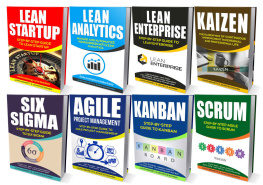
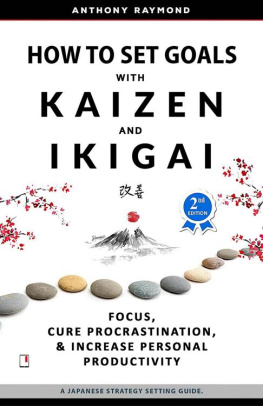
![Masaaki Imai - Strategic Kaizen(tm) Using Flow, Synchronization, and Leveling [Fsl(tm)] Assessment to Measure and Strengthen Operational Performance](/uploads/posts/book/267064/thumbs/masaaki-imai-strategic-kaizen-tm-using-flow.jpg)
